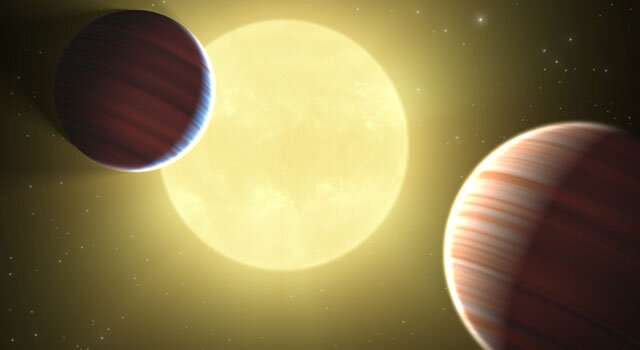The low density of some exoplanets is confirmed

The Kepler mission and its extension, called K2, discovered thousands of exoplanets. It detected them using the transit technique, measuring the dip in light intensity whenever an orbiting planet moved across the face of its host star as viewed from Earth. Transits can not only measure the orbital period, they often can determine the size of the exoplanet from the detailed depth and shape of its transit curve and the host star's properties. The transit method, however, does not measure the mass of the planet. The radial velocity method, by contrast, which measures the wobble of a host star under the gravitational pull of an orbiting exoplanet, allows for the measurement of its mass. Knowing a planet's radius and mass allows for the determination of its average density, and hence clues to its composition.
About fifteen years ago, CfA astronomers and others realized that in planetary systems with multiple planets, the periodic gravitational tug of one planet on another will alter their orbital parameters. Although the transit method cannot directly measure exoplanet masses, it can detect these orbital variations and these can be modeled to infer masses. Kepler has identified hundreds of exoplanet systems with transit-timing variations, and dozens have been successfully modeled. Surprisingly, this procedure seemed to find a prevalence of exoplanets with very low densities. The Kepler-9 system, for example, appears to have two planets with densities respectively of 0.42 and 0.31 grams per cubic centimeter. (For comparison, the rocky Earth's average density is 5.51 grams per cubic centimeter, water is, by definition, 1.0 grams per cubic centimeter, and the gas giant Saturn is 0.69 grams per cubic centimeter.) The striking results cast some doubt on one or more parts of the transit timing variation methodology and created a long-standing concern.
CfA astronomers David Charbonneau, David Latham, Mercedes Lopez-Morales, and David Phillips, and their colleagues tested the reliability of the method by measuring the densities of the Kepler-9 planets using the radial velocity method, its two Saturn-like planets being among a small group of exoplanets whose masses can be measured (if just barely) with either technique. They used the HARPS-N spectrometer on the Telescopio Nazionale Galileo in La Palma in sixteen observing epochs; HARPS-N can typically measure velocity variations with an error as tiny as about twenty miles an hour. Their results confirm the very low densities obtained by the transit-timing method, and verify the power of the transit-variation method.
More information: L Borsato et al. HARPS-N radial velocities confirm the low densities of the Kepler-9 planets, Monthly Notices of the Royal Astronomical Society (2019). DOI: 10.1093/mnras/stz181
Journal information: Monthly Notices of the Royal Astronomical Society
Provided by Harvard-Smithsonian Center for Astrophysics




















